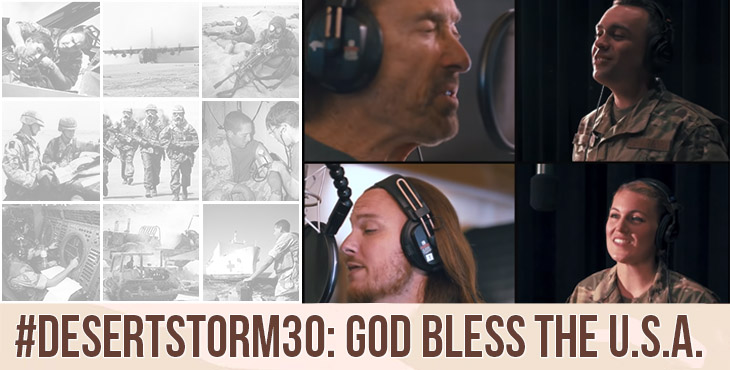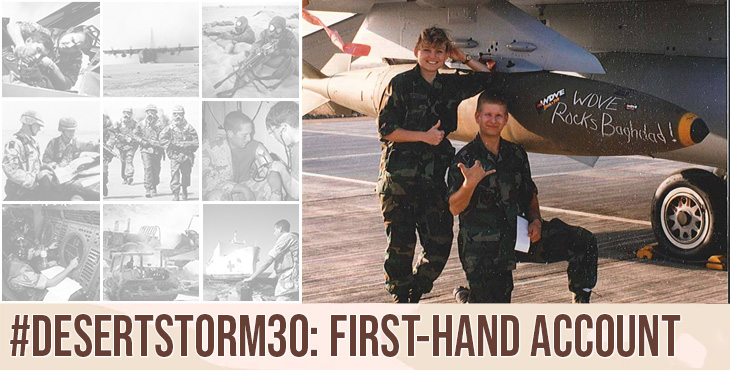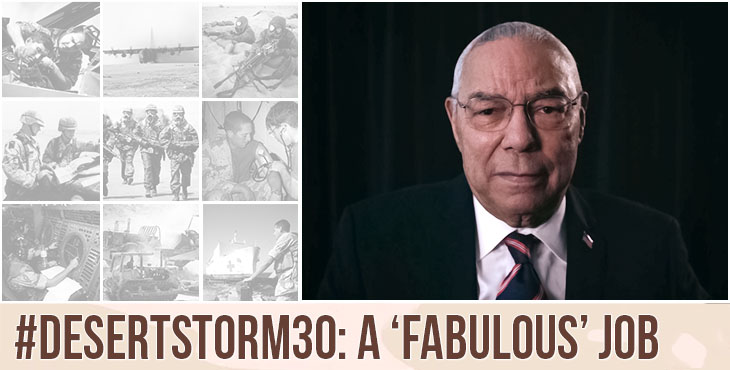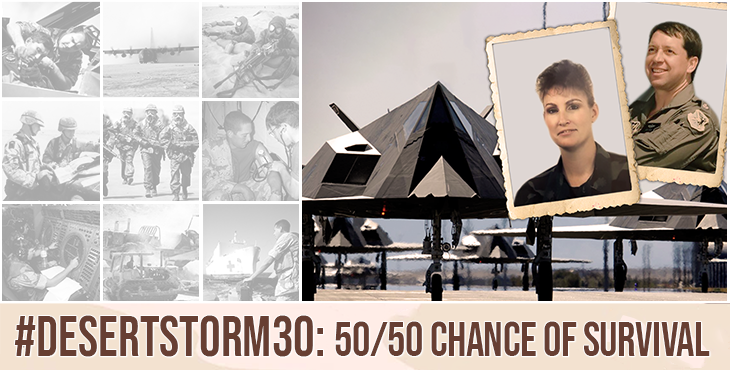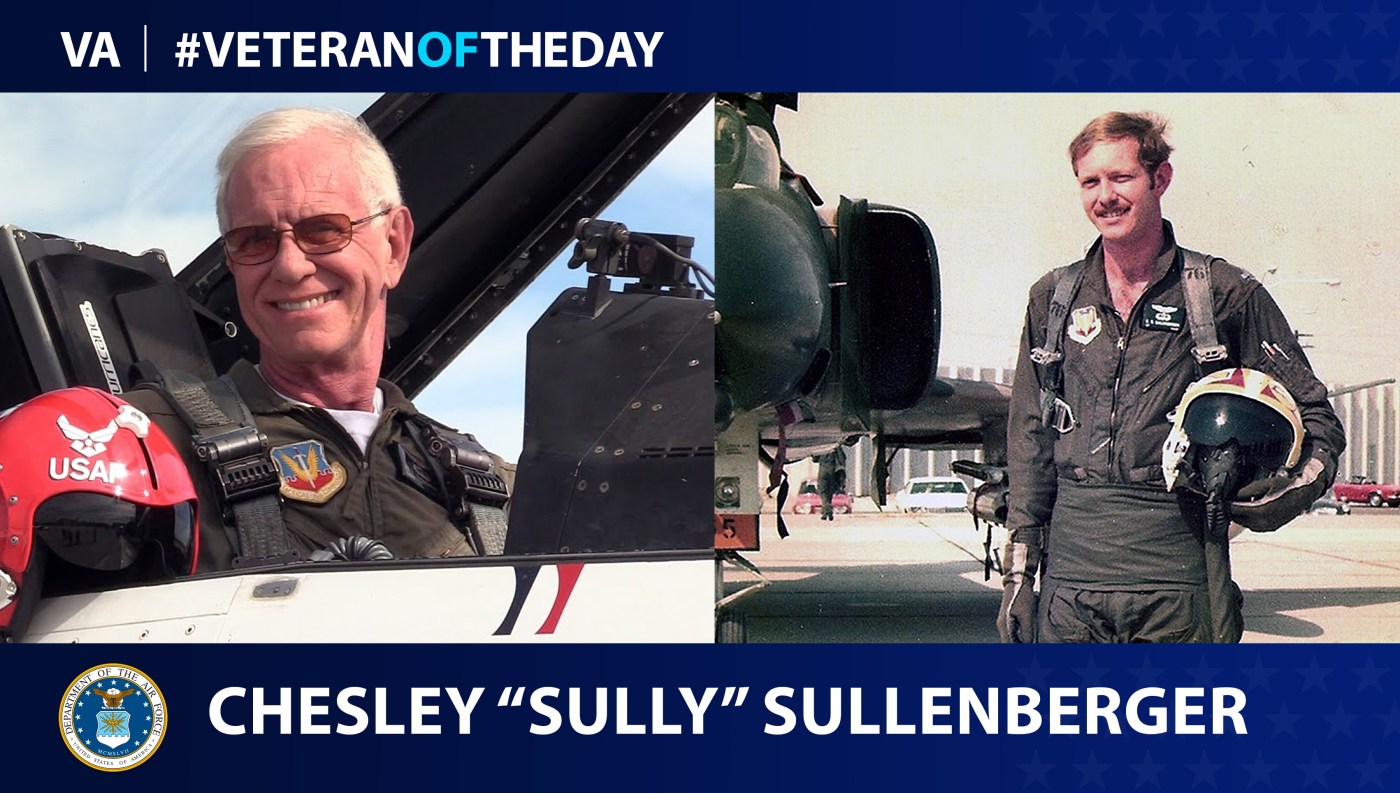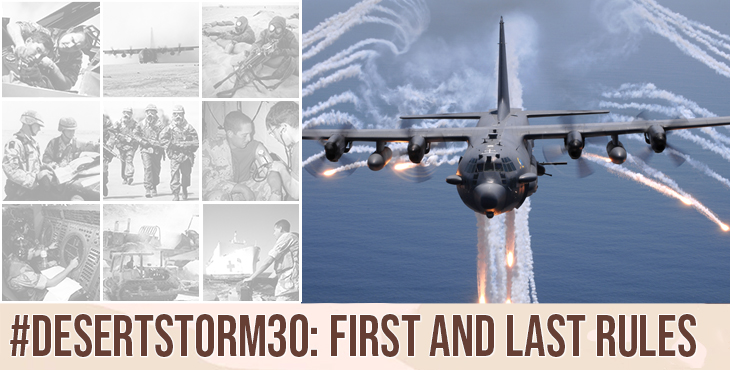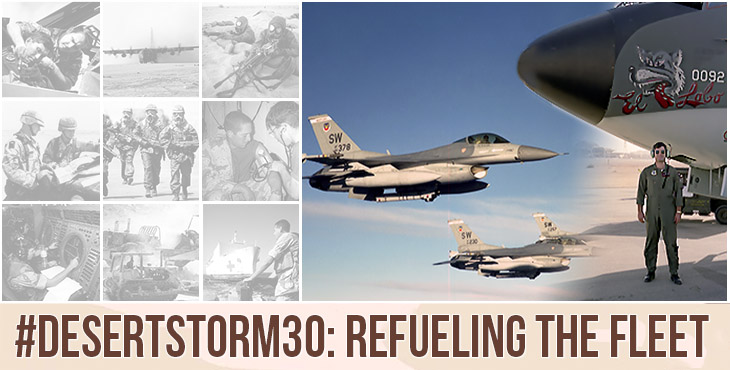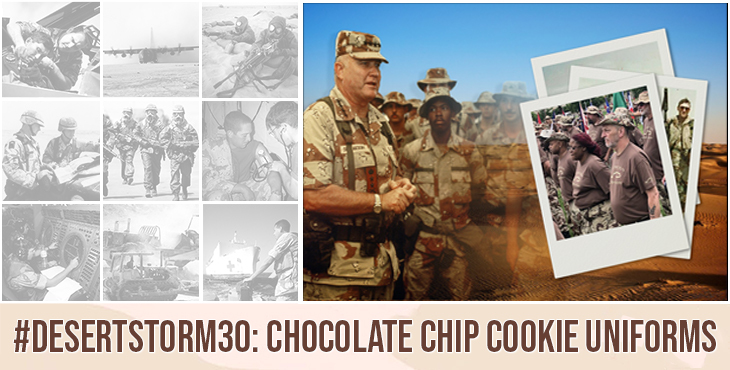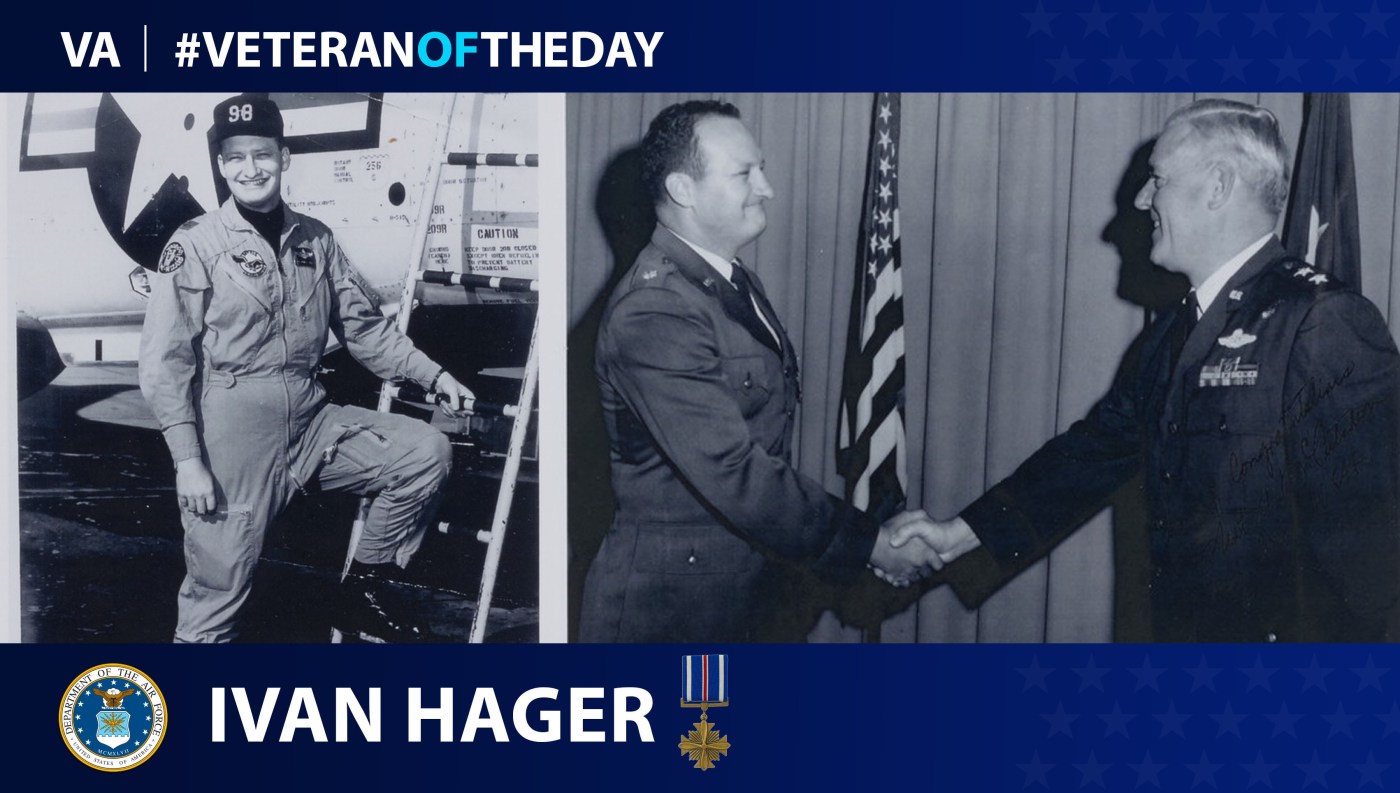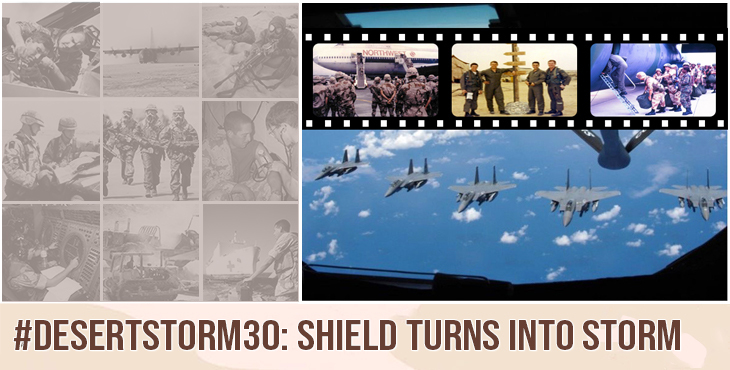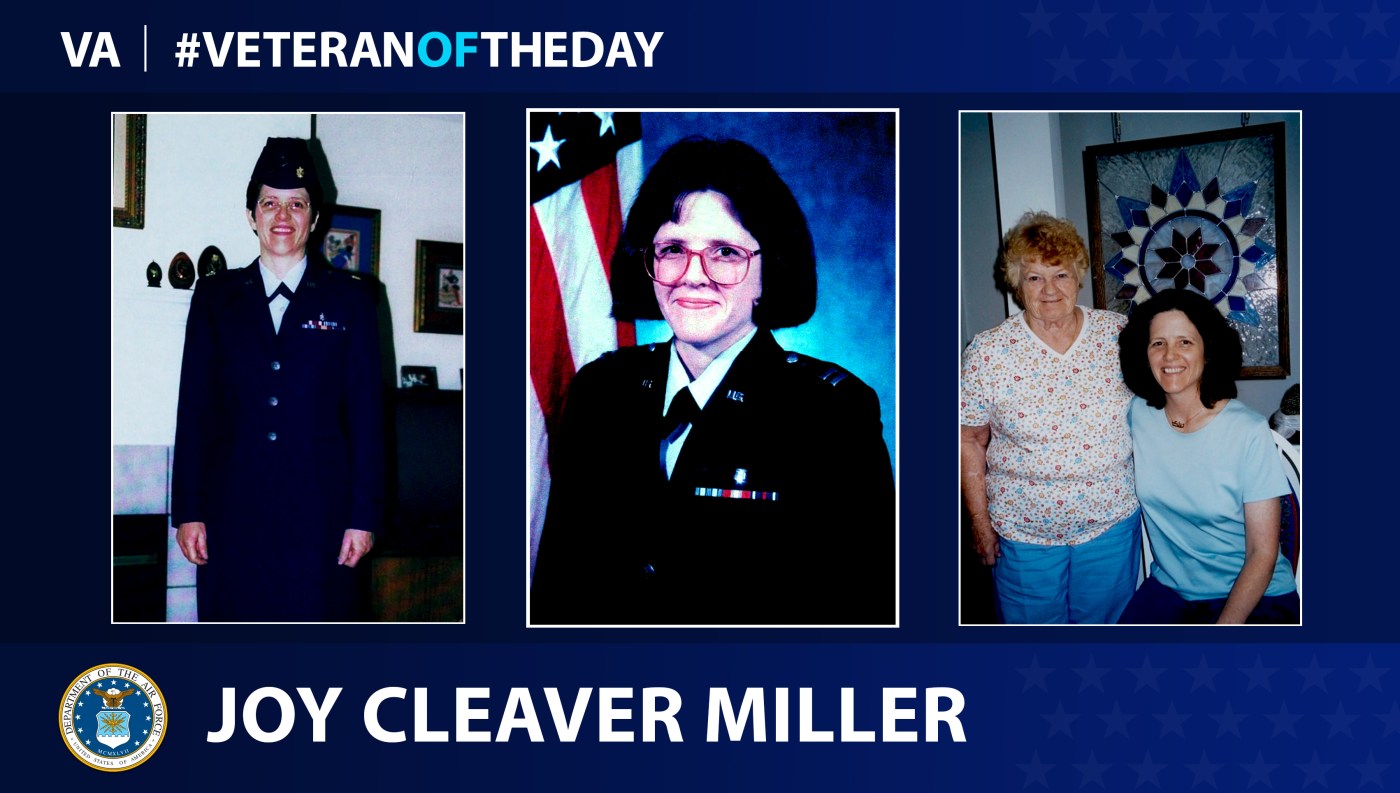January's woman author is Navy and Air Force Veteran Julia Maki Pyrah, who served aboard P-3C Orions as an aviation systems warfare operator from 1997-2002.
During Operation Desert Storm, there was an anthem that came to define the war: Lee Greenwood's country song "God Bless the U.S.A." When Greenwood originally released the song in 1984, it was moderately successful. The song peaked at #7 on the Billboard Hot Country Songs chart July 28, 1984. However, the song took on a renewed life during Operation Desert Storm.
Gary Kunich originally wrote this first-hand account the morning after Desert Storm started, when he was a 21-year-old Air Force sergeant. It’s 11:55 p.m., Jan. 16. The clock continues ticking past the United Nations’ deadline for Iraq to leave Kuwait. While the world holds its breath in anticipation of war, F-16s sit silently on a quiet runway. Will these mighty, Fighting Falcons fly into combat tonight? If they do, when?
During Desert Storm, there were many faces of the war. [...]
When Air Force Veteran Greg Feest took off in his F-117 Jan. 16, 1991, there was a 50/50 chance he wasn’t coming back. Iraq was one of the most heavily defended airspaces in history. According to the Gulf War Air Power Survey, there were 972 anti-aircraft artillery sites, 2,404 guns and 6,100 mobile guns. There were also surface-to-air missiles: 6,500 SA-7s, 400 SA-9s, 192 SA-13s, and 288 SA-14s. Pilots spent months planning operations, developing routes and making target lists during Operation Desert Shield. During that planning, the numbers were grim. For the 12 F-117s that left Jan. 16, commanders said six might not return. Most spouses didn’t know when the Desert Storm air war started and watched the TV coverage from the U.S. Bridget McGovern, Feest’s wife and also an Air Force Veteran, knew hours before. She watched from a command center at their base in Saudi Arabia.
Today’s #VeteranOfTheDay is Air Force Veteran Chesley “Sully” Sullenberger, who piloted the "Miracle on the Hudson" Jan. 15, 2009.
On their second mission during Operation Desert Storm, the crew of an AC-130H gunship, call sign Ghost 02, flew a mission that none of them should have lived to tell. Flying into Iraqi airspace, the 14 men aboard destroyed a command and control center, then evaded three surface-to-air missiles through death-defying maneuvers in the lumbering, four-propeller aircraft. The crew’s actions followed their aircraft commander’s first and last rule: all 14 men come home alive.
In 1990 the newest aircraft in the Air Force’s fleet of KC-135 air refueling tankers was already 25 years old. The venerable airframe based on the Boeing 707 airliner and its crews were being asked to do something few of them had been trained to do – take part in a conventional war.
Though it was first designed in 1962, finalized in 1976, and then standardized in 1990, the Desert Battle Dress Uniform (DBDU)—affectionately known for its “chocolate chip” or “cookie dough” camouflage patterns—defined the U.S. military era known for a single event: Operation Desert Storm.
Today’s #VeteranOfTheDay is Air Force Veteran Ivan Hager, who served as a navigator during the Vietnam War and received two Distinguished Flying Crosses.
The U.S did not take long to respond to Iraqi President Saddam Hussein occupying neighboring Kuwait Aug. 2, 1990. Five days later, President George H.W. Bush ordered Americans to the region to start Operation Desert Shield. Air Force Veteran Howard “Pip” Pope, commander for the 71st Tactical Fighter Squadron, was among the first American forces to arrive. Leading a squadron known as the “Ironmen” flying F-15s, they deployed with little notice in a matter of days. After a 14-hour flight from Langley Air Force Base in Virginia, they arrived at Dhahran Air Base in Saudi Arabia. Pope kept a diary of the events, excerpts of which follow.
Today’s #VeteranOfTheDay is Air Force Veteran Joy Cleaver Miller, who served in Saudi Arabia, Somalia, Bosnia, Russia and Yemen.


